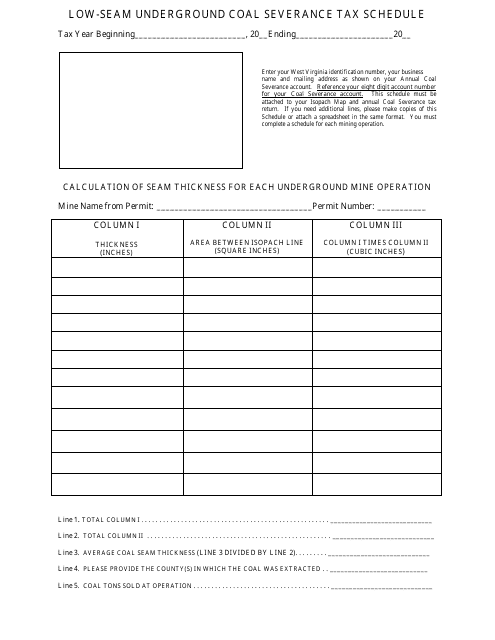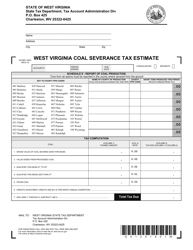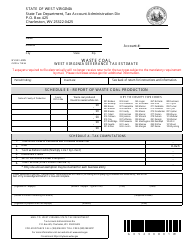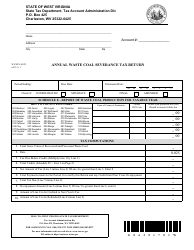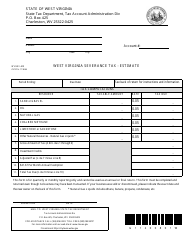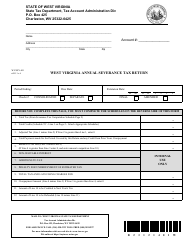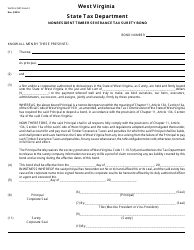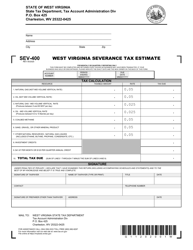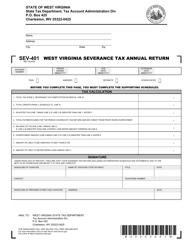Low-Seam Underground Coal Severance Tax Schedule - West Virginia
Low-Seam Underground Coal Severance Tax Schedule is a legal document that was released by the West Virginia State Tax Department - a government authority operating within West Virginia.
FAQ
Q: What is the Low-Seam Underground Coal Severance Tax Schedule?
A: The Low-Seam Underground Coal Severance Tax Schedule is a tax schedule in West Virginia that applies to the extraction of coal from low-seam underground mines.
Q: What is a severance tax?
A: A severance tax is a tax imposed on the extraction of natural resources, such as coal, oil, or gas.
Q: What is considered low-seam underground coal?
A: Low-seam underground coal refers to coal deposits that are located close to the surface and can be extracted through underground mining methods.
Q: How does the tax schedule work?
A: The tax schedule sets the tax rates based on the tonnage of low-seam underground coal extracted. The higher the tonnage, the higher the tax rate.
Q: What is the purpose of the tax?
A: The tax is imposed to generate revenue for the state and to offset the environmental and social costs associated with the extraction of coal.
Q: Who pays the severance tax?
A: The tax is paid by the mining companies or operators who extract low-seam underground coal.
Q: Is the tax rate the same for all low-seam underground coal?
A: No, the tax rates vary depending on the tonnage of coal extracted. Higher tonnage leads to higher tax rates.
Q: Are there any exemptions from the tax?
A: Yes, certain exemptions and credits may apply based on specific criteria, such as the location of the mine or the amount of coal extracted.
Form Details:
- The latest edition currently provided by the West Virginia State Tax Department;
- Ready to use and print;
- Easy to customize;
- Compatible with most PDF-viewing applications;
- Fill out the form in our online filing application.
Download a printable version of the form by clicking the link below or browse more documents and templates provided by the West Virginia State Tax Department.
